I tried to link my github repo to my azure function app which is typically done through the UI. However, github is throwing me some errors in the dependencies section of the build.
Run pip install -r requirements.txt
pip install -r requirements.txt
shell: /usr/bin/bash -e {0}
env:
AZURE_FUNCTIONAPP_PACKAGE_PATH: .
PYTHON_VERSION: 3.10
pythonLocation: /opt/hostedtoolcache/Python/3.10.11/x64
ERROR: Could not open requirements file: [Errno 2] No such file or directory: 'requirements.txt'
Notice: A new release of pip is available: 23.0.1 -> 23.1.2
Notice: To update, run: pip install --upgrade pip
Error: Process completed with exit code 1.
I'm very new to CI/CD, especially in this format. Any help on what it needs from me would be very helpful and appreciated. I am working on Windows with Python 3.10.6
Below is my github actions workflow file.
# Docs for the Azure Web Apps Deploy action: https://github.com/azure/functions-action
# More GitHub Actions for Azure: https://github.com/Azure/actions
# More info on Python, GitHub Actions, and Azure Functions: https://aka.ms/python-webapps-actions
name: Build and deploy Python project to Azure Function App - AutoAnalytics
on:
push:
branches:
- main
workflow_dispatch:
env:
AZURE_FUNCTIONAPP_PACKAGE_PATH: '.' # set this to the path to your web app project, defaults to the repository root
PYTHON_VERSION: '3.10' # set this to the python version to use (supports 3.6, 3.7, 3.8)
jobs:
build:
runs-on: ubuntu-latest
steps:
- name: Checkout repository
uses: actions/checkout@v2
- name: Setup Python version
uses: actions/setup-python@v1
with:
python-version: ${{ env.PYTHON_VERSION }}
- name: Create and start virtual environment
run: |
python -m venv venv
source venv/bin/activate
- name: Install dependencies
run: pip install -r requirements.txt
# Optional: Add step to run tests here
- name: Upload artifact for deployment job
uses: actions/upload-artifact@v2
with:
name: python-app
path: |
.
!venv/
deploy:
runs-on: ubuntu-latest
needs: build
environment:
name: 'Production'
url: ${{ steps.deploy-to-function.outputs.webapp-url }}
steps:
- name: Download artifact from build job
uses: actions/download-artifact@v2
with:
name: python-app
path: .
- name: 'Deploy to Azure Functions'
uses: Azure/functions-action@v1
id: deploy-to-function
with:
app-name: 'APP_NAME'
slot-name: 'Production'
package: ${{ env.AZURE_FUNCTIONAPP_PACKAGE_PATH }}
publish-profile: ${{ secrets.AZUREAPPSERVICE_PUBLISHPROFILE_PROFILE_PATH }}
scm-do-build-during-deployment: true
enable-oryx-build: true





